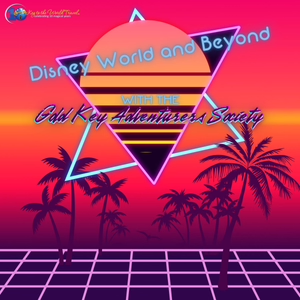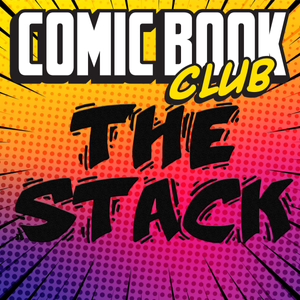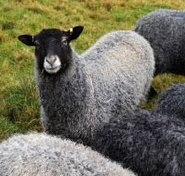
What can we learn from bees? Talk at Trill Farm, Dorset May 11 2012
05/17/12 • 66 min
Back after a too-long absence!
I had hoped to be able to produce a recording every month, but somehow life got in the way.
Here's the first podcast for this year a talk recorded at Trill Farm, Dorset (south of England, a little left of centre, for those not familiar with our layout!) at the invitation of chef Daphne Lambert, whose restaurant at Penrhos on the Welsh border was the first in the UK to be awarded organic certification by the Soil Association.
More about Daphne here - http://mamaheaven.org/blog/2011/07/daphne-lambert-nutritionist-chef/#.T7T2b3iURpg
More about Trill Farm here - http://trillfarm.co.uk/
From Graham in Scotland: The attached photos - taken from my bedroom window - of the Oilseed Rape field opposite my house in Scotland- explains at a glance the challenge my bees are faced with in trying to survive on this farm. It is a beautiful landscape - but an ecologically dying landscape which is poisonous to bees, butterflies and bumblebees. If I took a photo in any of the other three directions it would not be any different; oilseed rape (canola) is one of the major crops here in the Border country.You might find these images useful for slideshows etc, I have high resolution versions available for printed media.The images are also on FLICKR and you can link them to web-pages directly with the following links:http://farm9.staticflickr.com/8003/7216103764_7db308fb9c_z.jpghttp://farm9.staticflickr.com/8146/7216104626_6d507735ef_z.jpghttp://farm8.staticflickr.com/7103/7216102870_9d903b3de1_z.jpgNOTESAlmost all of the Oilseed Rape grown in Britain and Europe is treated with neonicotinoid pesticides at the time the seed is planted. Over the last decade the main neonicotinoid used on OSR has been Imidacloprid; we suspect that it is now being superceded by Clothianidin- which is more toxic to insects and far more persistent in soil and water.The insecticide Imidacloprid is 'systemic' - it is coated onto the seeds before planting. When the seed sprouts, it absorbs the poison and distributes it to every part of the growing plant: sap, stem, leaves, flowers and fruit. The insecticide then poisons any insect which bites the plant to suck its sap. Unfortunately, the poison also emerges in the nectar and pollen, which is harvested and eaten by bees, bumblebees, butterflies - and many other species of insect. The poison - Imidacloprid - is 7,000 times more toxic to bees than DDT was - and a dose of just 3 to 5 parts per BILLION in the nectar and pollen causes bees to become disoriented, unable to forage or fly. Many beekeepers are convinced this is why 4 million colonies have died in America since 2006. Over a milion bee colonies died in France from 1994 - 1998. Millions more have died in Argentina, Germany, Italy, Australia. These neurotoxins are used on over 3 million acres of arable crops in the UK: wheat, barley, OSR, potatoes, tomatoes, fruits etc - this means that both WE and the bees are eating neurotoxic insecticides in every bite of food we consume. Neonicotinoids applied as seed dressings kill most invertebrate life UNDER the ground as well as ABOVE. these poisons eradicate earthworms, beetles and insect larvae from the soil - which means there is no food for birds which probe the soil: lapwings, curlews, starlings etc. The result is that this beautiful scene is effectively an ecological desert; the fields are empty - no insects means no birds. Even the humble sparrow - which has declined by up to 80% in most areas of the UK. MUST have insect food to feed its young. Wall to wall neonics means no insects; no insects means no young sparrows, starlings, peewits, yellowhammers, partridges, corn buntings etc. etc.In the USA, more than 240 million acres of crops are treated with Clothianidin at planting - effectively wiping all insect life from that vast area permanently. The poisons are also highly PERSISTENT - Clothianidin has a 'half life' in some soils of up to 19 years; which means that after 57 years - 1/8 of the original insecticide would still persist in the soil. Of course, if it is used year after year in the same field, the pesticide burden is gigantic.Back after a too-long absence!
I had hoped to be able to produce a recording every month, but somehow life got in the way.
Here's the first podcast for this year a talk recorded at Trill Farm, Dorset (south of England, a little left of centre, for those not familiar with our layout!) at the invitation of chef Daphne Lambert, whose restaurant at Penrhos on the Welsh border was the first in the UK to be awarded organic certification by the Soil Association.
More about Daphne here - http://mamaheaven.org/blog/2011/07/daphne-lambert-nutritionist-chef/#.T7T2b3iURpg
More about Trill Farm here - http://trillfarm.co.uk/
From Graham in Scotland: The attached photos - taken from my bedroom window - of the Oilseed Rape field opposite my house in Scotland- explains at a glance the challenge my bees are faced with in trying to survive on this farm. It is a beautiful landscape - but an ecologically dying landscape which is poisonous to bees, butterflies and bumblebees. If I took a photo in any of the other three directions it would not be any different; oilseed rape (canola) is one of the major crops here in the Border country.You might find these images useful for slideshows etc, I have high resolution versions available for printed media.The images are also on FLICKR and you can link them to web-pages directly with the following links:http://farm9.staticflickr.com/8003/7216103764_7db308fb9c_z.jpghttp://farm9.staticflickr.com/8146/7216104626_6d507735ef_z.jpghttp://farm8.staticflickr.com/7103/7216102870_9d903b3de1_z.jpgNOTESAlmost all of the Oilseed Rape grown in Britain and Europe is treated with neonicotinoid pesticides at the time the seed is planted. Over the last decade the main neonicotinoid used on OSR has been Imidacloprid; we suspect that it is now being superceded by Clothianidin- which is more toxic to insects and far more persistent in soil and water.The insecticide Imidacloprid is 'systemic' - it is coated onto the seeds before planting. When the seed sprouts, it absorbs the poison and distributes it to every part of the growing plant: sap, stem, leaves, flowers and fruit. The insecticide then poisons any insect which bites the plant to suck its sap. Unfortunately, the poison also emerges in the nectar and pollen, which is harvested and eaten by bees, bumblebees, butterflies - and many other species of insect. The poison - Imidacloprid - is 7,000 times more toxic to bees than DDT was - and a dose of just 3 to 5 parts per BILLION in the nectar and pollen causes bees to become disoriented, unable to forage or fly. Many beekeepers are convinced this is why 4 million colonies have died in America since 2006. Over a milion bee colonies died in France from 1994 - 1998. Millions more have died in Argentina, Germany, Italy, Australia. These neurotoxins are used on over 3 million acres of arable crops in the UK: wheat, barley, OSR, potatoes, tomatoes, fruits etc - this means that both WE and the bees are eating neurotoxic insecticides in every bite of food we consume. Neonicotinoids applied as seed dressings kill most invertebrate life UNDER the ground as well as ABOVE. these poisons eradicate earthworms, beetles and insect larvae from the soil - which means there is no food for birds which probe the soil: lapwings, curlews, starlings etc. The result is that this beautiful scene is effectively an ecological desert; the fields are empty - no insects means no birds. Even the humble sparrow - which has declined by up to 80% in most areas of the UK. MUST have insect food to feed its young. Wall to wall neonics means no insects; no insects means no young sparrows, starlings, peewits, yellowhammers, partridges, corn buntings etc. etc.In the USA, more than 240 million acres of crops are treated with Clothianidin at planting - effectively wiping all insect life from that vast area permanently. The poisons are also highly PERSISTENT - Clothianidin has a 'half life' in some soils of up to 19 years; which means that after 57 years - 1/8 of the original insecticide would still persist in the soil. Of course, if it is used year after year in the same field, the pesticide burden is gigantic.Previous Episode
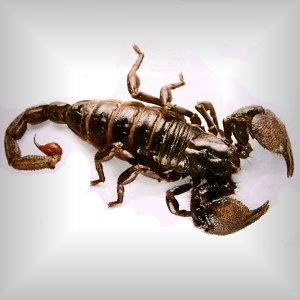
Real bugs as keyrings: the trivialization of life
I was looking around the Salago shop in Totnes a couple of days ago and discovered that they were selling real bugs - including spiders, scorpions, beetles, butterflies and crabs - embedded in plastic as keyrings and other trinkets. The only marking on the packaging was a web site - http://egcuk.com - which indicates that the bugs are farmed (and possibly also gathered from the wild) in China (although an address in Guatemala is also mentioned). This seems to me to be another sad example of the trivialization of life, which I feel must be confronted. Farming insects for food is one thing - not that you will catch me having a cicada sandwich - but keyrings? The extremes of this trade are documented here - http://www.treehugger.com/natural-sciences/live-animals-being-sold-as-keyrings-in-china.html - live animals encapsulated in sealed containers for the amusement of tourists! If you see this kind of thing on sale anywhere, please talk to the manager and let's get it stopped. A polite approach is probably the best - put your point of view and allow them to respond. If a number of people do this over a few days, I think they will get the message!
Next Episode
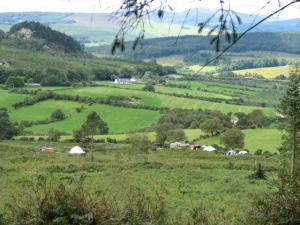
Permaculture and Bees in Ireland
I recently had the pleasure of teaching a weekend course in Ireland to a lovely group of people. The setting was Carraig Dúlra - an organic small-holding in County Wicklow run by Suzie and Mike Cahn.
In this podcast you will hear Mike talking about his bees, along with others who attended the course giving their feedback on the weekend. Then you will hear from Sammy - one of the younger Cahns - and finally you will hve a tour of the farm by Susie, who teaches permaculture and forest gardening.
The teaching site is on what I can only describe as marginal land for farming, comprising at first glance a rocky slope covered with heather, bracken and gorse. However, when you look more closely you find a whole range of unexpected fruit and vegetables that you would never imagine would thrive in such a place as this.
If you want to learn about permaculture and forest gardening in a beautiful setting, visit the Carraig Dúlra web site and book yourself in - http://www.dulra.org
I think you will enjoy this podcast and I look forward to your comments.
If you like this episode you’ll love
Episode Comments
Generate a badge
Get a badge for your website that links back to this episode
<a href="https://goodpods.com/podcasts/the-barefoot-beekeeper-79658/what-can-we-learn-from-bees-talk-at-trill-farm-dorset-may-11-2012-4254144"> <img src="https://storage.googleapis.com/goodpods-images-bucket/badges/generic-badge-1.svg" alt="listen to what can we learn from bees? talk at trill farm, dorset may 11 2012 on goodpods" style="width: 225px" /> </a>
Copy


